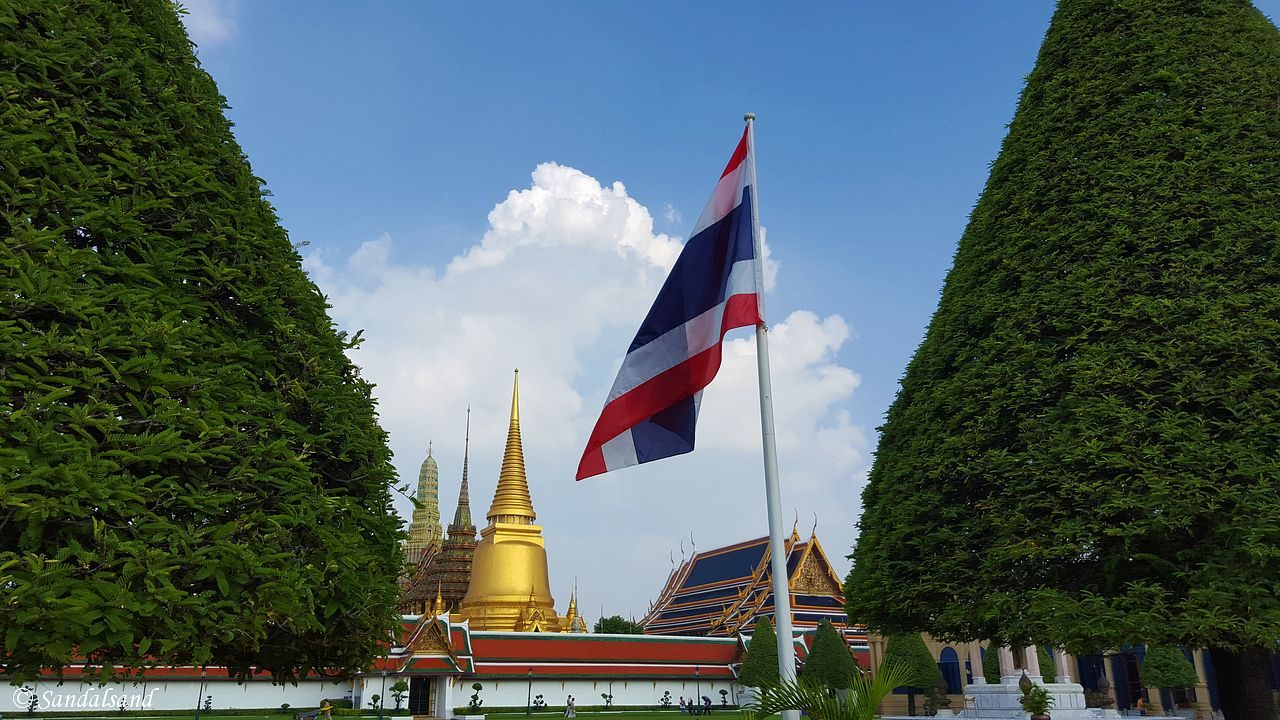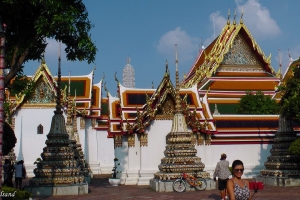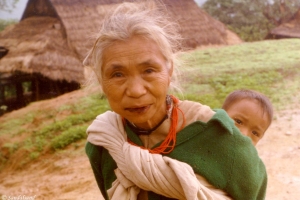This is a collection of pictures from Thailand. They are from a long journey in 1985 and a revisit to Bangkok 30 years later.
The first time I spent five weeks on the beaches in the south, in Bangkok and in the north; the second time only 24 hours in and around the capital.
Explore all Thailand entries on this link. You will find this picture gallery page, videos, articles from World Heritage Sites and regular travelogues.
Click on the gallery to reveal all pictures from Thailand.
A layover in Bangkok gave me the opportunity to make a half-day trip to the World Heritage Site of Ayutthaya, as well as the Bang Pa-in Palace - north of Bangkok. This gallery also includes some images from Bangkok, in particular the Grand Palace.
64 Photos
Koh Samui, Bangkok and the Golden Triangle in northern Thailand. The pictures and their settings are described in several entries.
77 Photos
View all photo galleries on Sandalsand.
Fast facts about Thailand
Want to learn more than just a look at pictures from Thailand? Learn about the country on Wikipedia. Here is an introduction based on it.
Thailand, historically known as Siam, officially the Kingdom of Thailand, is a country in Southeast Asia. It spans 513,120 square kilometres, with a population of almost 70 million. It borders Myanmar and Laos in the north, Laos and Cambodia to the east, and the Gulf of Thailand and Malaysia in the south, and also the Andaman Sea and Myanmar in the west.
Thailand also shares maritime borders with Vietnam to the southeast, and Indonesia and India to the southwest. Thailand has experienced multiple coups and military dictatorships. From 2014 to 2019 it was formally under military rule, until the military introduced a new constitution and held elections which established the framework of a parliamentary constitutional monarchy. In practice, however, structural advantages in the constitution have ensured the military’s hold on power. Bangkok is the nation’s capital and largest city.
Throughout the era of Western imperialism in Asia, Siam remained the only nation in the region to avoid being colonised by foreign powers, although it was often forced to cede both territory and trade concessions in unequal treaties. The Siamese system of government was centralised and transformed into a modern unitary absolute monarchy in the reign of Chulalongkorn. In World War I, Siam sided with the Allies, a political decision made in order to amend the unequal treaties. Following a bloodless revolution in 1932, it became a constitutional monarchy and changed its official name to Thailand, which was an ally of Japan in World War II. In the late 1950s, a military coup under Field Marshal Sarit Thanarat revived the monarchy’s historically influential role in politics.
Thailand today
Thailand became a major ally of the United States, and played an anti-communist role in the region as a member of the failed SEATO, but since 1975, had sought to improve relations with Communist China and Thailand’s neighbors. Apart from a brief period of parliamentary democracy in the mid-1970s, Thailand has periodically alternated between democracy and military rule. Since the 2000s, it has been caught in a series of bitter political conflict between supporters and opponents of Thaksin Shinawatra, which culminated in two coups, in 2014, and the establishment of its current constitution, and ongoing pro-democracy protests.
Thailand is a middle power in global affairs, and a founding member of ASEAN; ranking high in the Human Development Index. It has the second-largest economy in Southeast Asia, and the 22nd-largest in the world by PPP. Thailand is classified as a newly industrialised economy; manufacturing, agriculture, and tourism are leading sectors of the economy.




